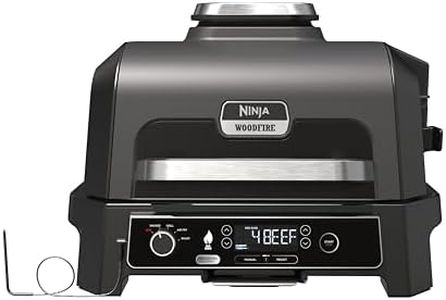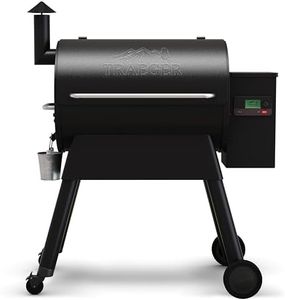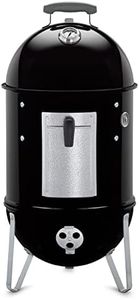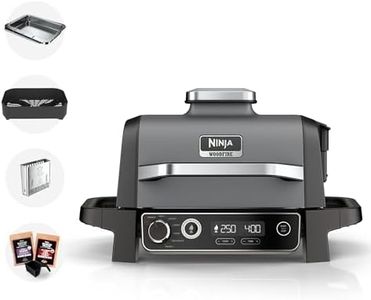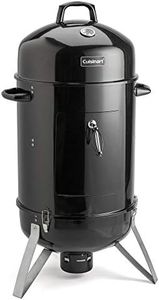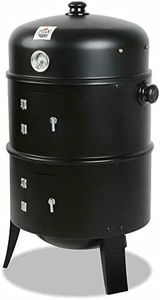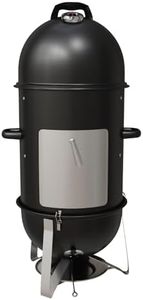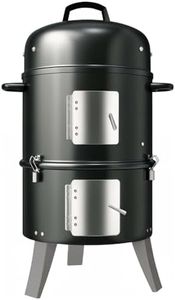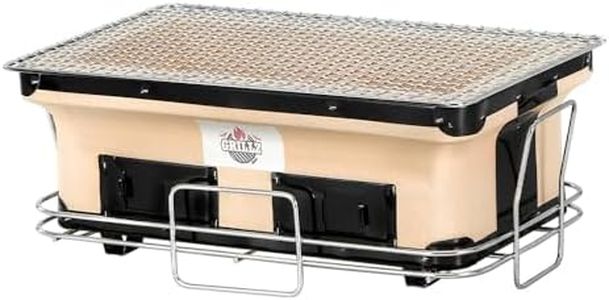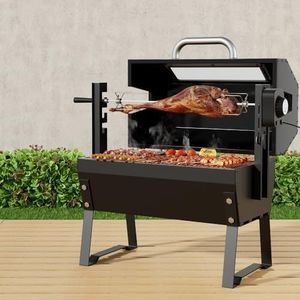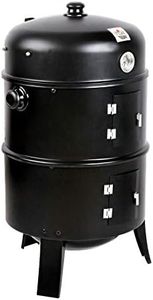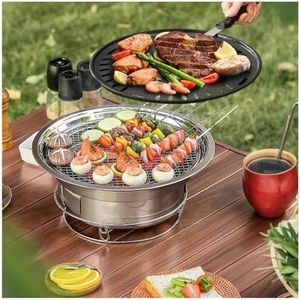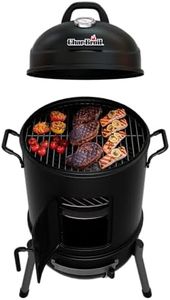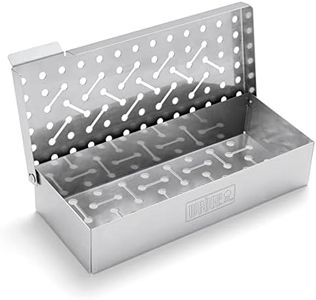We Use CookiesWe use cookies to enhance the security, performance,
functionality and for analytical and promotional activities. By continuing to browse this site you
are agreeing to our privacy policy
10 Best Bbq Smokers
From leading brands and best sellers available on the web.Buying Guide for the Best Bbq Smokers
Choosing the right BBQ smoker can make a big difference in how much you enjoy cooking and the flavors you can achieve. Start by thinking about the types of foods you'd like to smoke, how much you plan to cook at once, and your available space for the smoker. Consider how involved you want to be during the cooking process: some smokers require constant attention, while others are more 'set and forget.' Also, think about where you’ll be using it—backyard, balcony, or somewhere portable for travel. Understanding these basics will help you navigate the different smoker types and features so you can find the perfect fit for your style and needs.Type of SmokerThe type of smoker refers to the way the smoker operates and what powers it. Common types include offset smokers, vertical water smokers, pellet smokers, electric smokers, and kamado grills. Each type has different benefits and challenges: for example, some require more manual work (like using wood or charcoal), while others (like electric or pellet smokers) are more automated. If you want deep, traditional smoky flavor and don't mind managing the fire, manual smokers are ideal. If you prefer convenience and steady temperatures for long hours, an electric or pellet smoker is probably the best for you. Consider your commitment to hands-on cooking when choosing a type.
Cooking CapacityCooking capacity means how much food you can smoke at one time. Smokers are often measured by the size of the cooking grates or the number of racks they offer. Small units are perfect for individuals or couples, medium sizes for families, and larger ones for parties or regular entertaining. Think about how many people you typically cook for, and whether you want room to smoke large cuts or just a few portions. Always pick a size that matches your common usage, as a smoker that's too small can be limiting, while a huge one can be wasteful and harder to manage.
Temperature ControlTemperature control determines how easy it is to manage and maintain cooking temperatures inside the smoker. Some smokers have precise digital controls, while others rely on manual vents and dampers. Automated systems (like in electric or pellet smokers) let you set a temperature and forget it, making them great for busy or less experienced users. Manual systems, found in traditional charcoal or offset smokers, allow for greater customization but require attention and practice. Choose a control style that matches your comfort with monitoring and adjusting heat.
PortabilityPortability refers to how easy it is to move the smoker around. Some smokers are very heavy and best left in a set backyard spot. Others are designed to be light and mobile, making them perfect for camping, tailgating, or moving to different parts of your yard. If you plan to keep your smoker in one place, weight isn't a big issue. If you want the option to take it places, look for lighter models with wheels or handles.
Material and DurabilityThis spec is about what the smoker is made from and how long it is likely to last. Durable materials like thick steel or solid ceramics hold heat well and stand up to years of use outdoors. Cheaper smokers may use thinner metal and can wear out or rust faster. If you want your smoker to last through many seasons, look for solid construction and weather resistance. If you'll mostly use it in sheltered areas or don't need it to last decades, basic materials may be enough.
Cleaning and MaintenanceCleaning and maintenance covers how easy it is to care for your smoker. Some models have removable ash pans, grease trays, or non-stick grids that make cleaning up much less of a chore. Others can be more difficult to keep clean, leading to more time spent after cooking. Think about how much effort you’re willing to put into cleaning up after each session, and look for models that make this as easy as possible if that's important to you.
